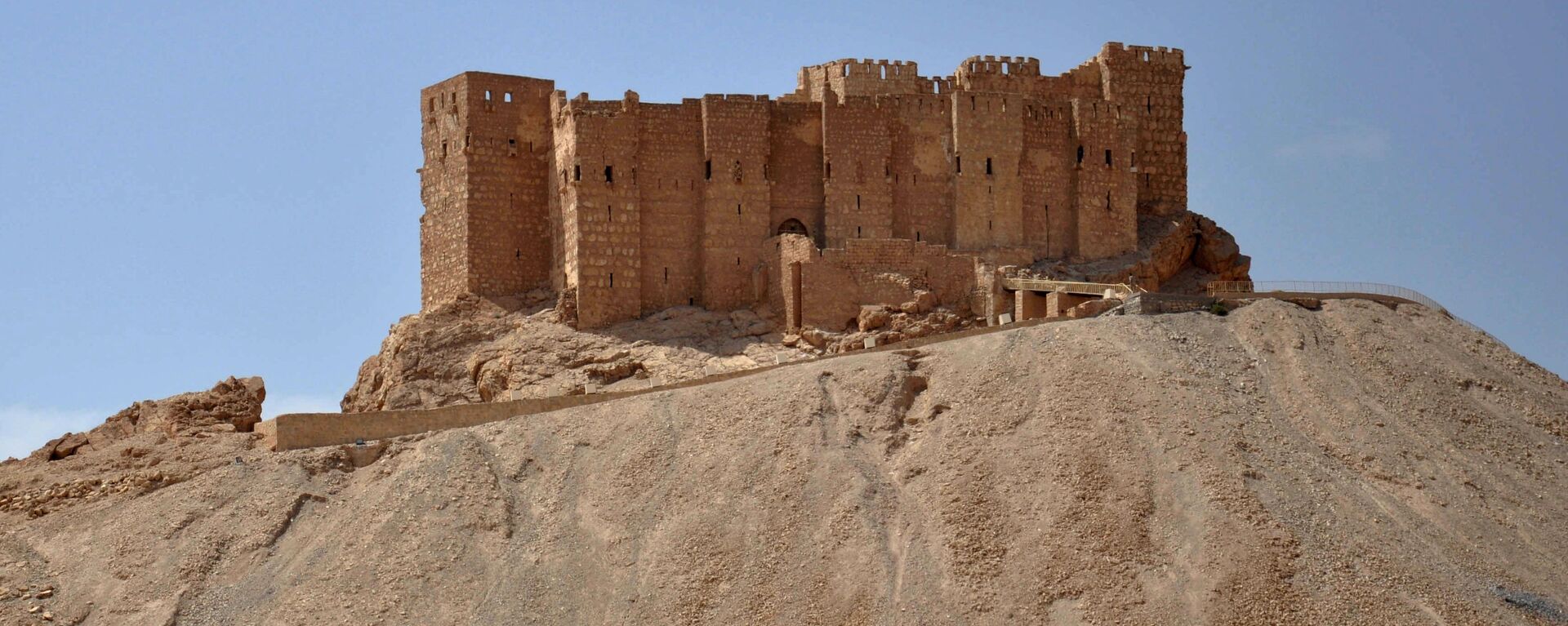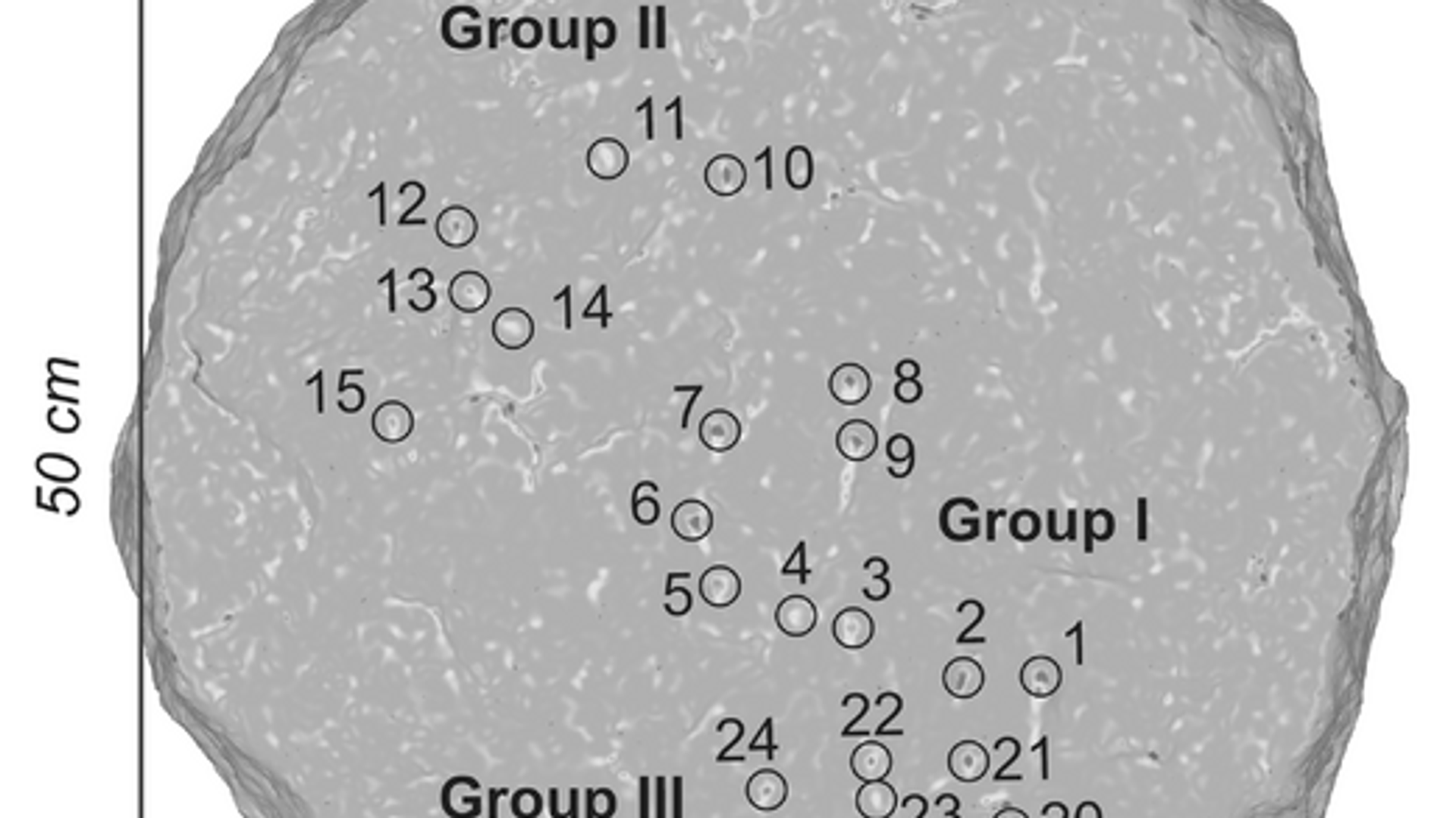https://sputnikglobe.com/20231231/mapping-the-cosmos-a-2400-year-old-ritual-stone-depicts-sky-before-modern-astronomy-1115916256.html
Mapping the Cosmos: A 2,400-Year-Old 'Ritual' Stone Depicts Sky Before Modern Astronomy
Mapping the Cosmos: A 2,400-Year-Old 'Ritual' Stone Depicts Sky Before Modern Astronomy
Sputnik International
Archeologists have identified 29 unique carvings on a stone disk that correspond to stars in constellations such as Scorpius, Orion, Cassiopeia and the Pleiades.
2023-12-31T15:38+0000
2023-12-31T15:38+0000
2023-12-31T15:38+0000
beyond politics
science & tech
society
germany
italy
orion
https://cdn1.img.sputnikglobe.com/img/07e7/0c/1f/1115915850_0:113:521:406_1920x0_80_0_0_6f0785383db8a0ffdf38d8afe19fcec8.png
An ancient stone disk, possibly one of the oldest celestial maps ever discovered, has been unearthed at an ancient hill fort in Rupinpiccolo, northeastern Italy. The artefact may reveal the location of a supernova that exploded thousands of years ago and is believed to depict a celestial map of the night sky, according to a study in the journal Astronomische Nachrichten.The etchings on the "ritual" stone disk match patterns of celestial stars from ancient times. Found close to ancient fortified castellieri settlements that thrived from between 1,800 and 1,650 B.C. to 400 B.C. The disk, roughly the size of a car tire, bears chisel marks from its creation over 2,400 years ago.But a marking positioned north of the constellation of Orion intrigued scientists, as it does not align with any recognized star. This symbol could signify a star that experienced an incomplete supernova, resulting in a black hole that remains elusive with present-day instruments but might be discernible using sophisticated astronomy methods.Analyzing the disk, researchers uncovered 29 distinct markings: 24 on one side and the remaining five on the reverse. These patterns correspond to celestial bodies in constellations like Scorpius, Orion, Cassiopeia and the Pleiades.Nevertheless, a unique marker above Orion's northern region puzzled on the stone astronomers because it does not correspond to any familiar star today. This marker might point to a star that experienced a supernova — a star's powerful and luminous explosion — resulting in an elusive black hole that advanced astronomical methods might one day reveal.While the exact age of the stone remains a mystery, its depiction of the celestial sphere seems older than many counterparts. The famed Nebra disk from Germany, considered to be from roughly 1,600 B.C., is one of the earliest known representations of the night sky. However, it has frequently been interpreted more as symbolism than a detailed astronomical chart.The Rupinpiccolo hill fort disk predates "faithful" astronomical maps, suggesting its potential role in tracking seasonal changes for agricultural purposes, which were vital for the survival of the ancient settlement.More in-depth analysis is needed to ascertain the artefact's meaning and uncover its wider implications. The stone disk serves as a reminder of the profound astronomical wisdom of early civilizations and its practical manifestations.
https://sputnikglobe.com/20220914/from-techno--signatures-to-astro-archeological-artifacts-search-continues-for-alien-life-1100766853.html
https://sputnikglobe.com/20231216/mesa-verdes-petroglyphs-new-window-into-ancient-astronomical-practices-1115618531.html
germany
italy
Sputnik International
feedback@sputniknews.com
+74956456601
MIA „Rosiya Segodnya“
2023
Chimauchem Nwosu
https://cdn1.img.sputnikglobe.com/img/07e7/09/01/1113046371_0:99:1536:1635_100x100_80_0_0_9c5c627283eca931c39fe4852bbb301c.jpg
Chimauchem Nwosu
https://cdn1.img.sputnikglobe.com/img/07e7/09/01/1113046371_0:99:1536:1635_100x100_80_0_0_9c5c627283eca931c39fe4852bbb301c.jpg
News
en_EN
Sputnik International
feedback@sputniknews.com
+74956456601
MIA „Rosiya Segodnya“
Sputnik International
feedback@sputniknews.com
+74956456601
MIA „Rosiya Segodnya“
Chimauchem Nwosu
https://cdn1.img.sputnikglobe.com/img/07e7/09/01/1113046371_0:99:1536:1635_100x100_80_0_0_9c5c627283eca931c39fe4852bbb301c.jpg
celestial map, ancient stone disk, supernova location, rupinpiccolo, hill fort, astronomical markings, orion, cassiopeia, pleiades, nebra disk.
celestial map, ancient stone disk, supernova location, rupinpiccolo, hill fort, astronomical markings, orion, cassiopeia, pleiades, nebra disk.
Mapping the Cosmos: A 2,400-Year-Old 'Ritual' Stone Depicts Sky Before Modern Astronomy
Archeologists have identified 29 unique carvings on a stone disk that correspond to stars in constellations such as Scorpius, Orion, Cassiopeia and the Pleiades.
An ancient stone disk, possibly one of the oldest celestial maps ever discovered, has been unearthed at an ancient hill fort in Rupinpiccolo, northeastern Italy.
The artefact may reveal the location of a supernova that exploded thousands of years ago and is believed to depict a celestial map of the night sky, according to a study in the journal
Astronomische Nachrichten.The etchings on the "ritual" stone disk match patterns of celestial stars from ancient times. Found close to ancient fortified castellieri settlements that thrived from between 1,800 and 1,650 B.C. to 400 B.C. The disk, roughly the size of a car tire, bears chisel marks from its creation over 2,400 years ago.
But a marking positioned north of the constellation of Orion intrigued scientists, as it does not align with any recognized star. This symbol could signify a star that experienced an incomplete supernova, resulting in a black hole that remains elusive with present-day instruments but might be discernible using sophisticated astronomy methods.

14 September 2022, 13:58 GMT
Analyzing the disk, researchers uncovered 29 distinct markings: 24 on one side and the remaining five on the reverse. These patterns correspond to celestial bodies in constellations like Scorpius, Orion, Cassiopeia and the Pleiades.
Nevertheless, a unique marker above Orion's northern region puzzled on the stone astronomers because it does not correspond to any familiar star today. This marker might
point to a star that experienced a supernova — a star's powerful and luminous explosion — resulting in an elusive black hole that advanced astronomical methods might one day reveal.
While the exact age of the stone remains a mystery, its depiction of the celestial sphere seems older than many counterparts. The famed Nebra disk from Germany, considered to be from roughly 1,600 B.C., is one of the earliest known representations of the night sky. However, it has frequently been interpreted more as symbolism than a
detailed astronomical chart.The Rupinpiccolo hill fort disk predates "faithful" astronomical maps, suggesting its potential role in tracking seasonal changes for agricultural purposes, which were vital for the survival of the ancient settlement.

16 December 2023, 09:25 GMT
More in-depth analysis is needed to ascertain the artefact's meaning and uncover its wider implications. The stone disk serves as a reminder of the profound astronomical wisdom of early civilizations and its practical manifestations.







